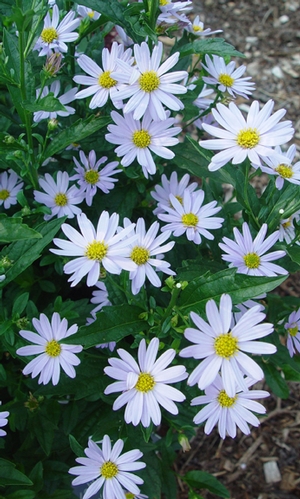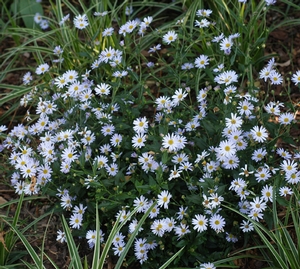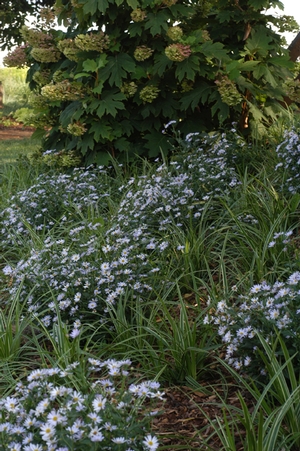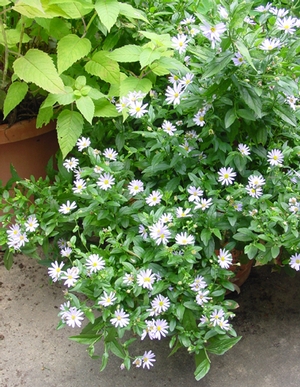Kalimeris incisa 'Blue Star'
Common: Japanese asterKalimeris incisa 'Blue Star' - 72 per flat
- Height: 18"
- Spread: 18"-24"
- Spacing: 12"-18"
- Hardiness Zone(s): 5-9


Kalimeris incisa 'Blue Star' - 72 per flat



A wonderful pot plant with long retail shelf life and rewarding garden and landscape performance. It loves heat and humidity and breezes through a drought like a champ. Single, one inch, pale blue, daisy-like flowers on a compact mound of green all summer. Resembles Felicia or Brachycomb - but it's hardy! Very popular in Europe and deserves much more recognition here. Many thanks to Ewald Hügen for introducing us to this gem!
Easy to grow with hardly any maintenance! Prefers well-drained areas in full sun. Very similar to Boltonia and Aster; in fact, it can often be a little difficult to differentiate between them. Propagate by seed or cuttings. Cut back in late fall. Showiest in perennial beds in single or mass plantings.
As much as I am wowed by voluptuous blossoms, I like to champion the strong garden performers which have quieter charm. One whose charm seldom disappoints is an Asian Aster relative called Kalimeris incisa 'Blue Star'. This little number grows 15-18" tall and 18-24" wide, and begins its production of 1 1/2" lavender blue daisies in June, carrying on into autumn (I kid you not.) 'Blue Star' forms tidy clumps; it does not run, unlike some of the other Aster relatives that we have tried such as Asteromoea and Aster ageratoides. - Katherine Tracey, Avant Gardens
Here are some differences between Aster, Boltonia and Kalimeris:
Aster: margins not scarious, unequal, overlapping in 2, usually many series, pappus bristles uniform
Boltonia: margins scarious, equal, overlapping in 2, usually many series, pappus bristles non-uniform
Kalimeris: margins scarious, equal, overlapping in 2, usually many series, pappus bristles uniform
- Herbaceous Perennial Plants by Allan Armitage (p.615)